Shared from The Verge – Entertainments
A welcome trend is well underway in the realm of gaming laptops: some of them are getting smaller. The latest company to get on board with this is Alienware and its new X14. This is a thin 14-inch gaming laptop that’s completely different from anything else that the company offers. There’s now something on Alienware’s menu for people who still see gaming as the main course yet also hold portability in high regard.
It’s not an oversimplification to say that the X14 is basically a shrunken version of the company’s larger, pricier, and more powerful 15-inch X15. It’s thinner, lighter, and, as you might expect, far less powerful. As expected, Alienware made some compromises to fit everything into a smaller chassis. The X14 has fewer ports, and some of the futuristic (albeit divisive) RGB LEDs along its rear (seen here on the X17) are absent. Then there are issues that impact usability, like ho-hum battery life and a cramped keyboard. I’ll get to those more below.
On the other hand, I’m impressed that the smaller X14 retains many of the same features that define the larger models. It has a capable 12th Gen Intel processor, lightning-fast RAM clocked at 5,200MHz, and two Thunderbolt 4 ports. In terms of performance, this does not run like the compromised machine that I thought it would be. It’s certainly not priced like a compromised machine, either. Alienware stated at launch that the X14 would cost $1,799.99, but the company is actually offering a $1,649.99 option, along with two higher-tier models.
The X14 can be configured with two processor options: the 12-core Intel Core i5-12500H or the Intel Core i7-12700H 14-core processor. It starts with 16GB of LPDDR5 RAM clocked at 4,800MHz, but you can upgrade to up to 32GB of LPDDR5 memory clocked at 5,200MHz — currently the fastest speed available in a laptop. In terms of graphics, the X14 has the RTX 3050 by default but can be upgraded to a more powerful and slightly more power-hungry RTX 3050 Ti or RTX 3060.
The unit I tested is the current top-of-the-line model, which will retail for $2,299.99. It has the 14-core Core i7-12700H processor, the RTX 3060, and 32GB of 5,200MHz RAM. If you get a lower-spec model, the storage can be increased after the purchase, though the RAM is soldered to the motherboard and can’t be changed.
The design of the X14 is similar to that of the other X-series laptops, but tweaked slightly to accommodate its smaller size. Alienware’s off-white Lunar Light colorway covers the display’s enclosure, as well as certain parts of the chassis. And surrounding the keyboard, the X14 has a rubberized texture that keeps my palms in place while typing. It has a more gamer-focused design than some high-end gaming laptops that have all-metal designs, but it’s subdued compared to some of Alienware’s older machines.
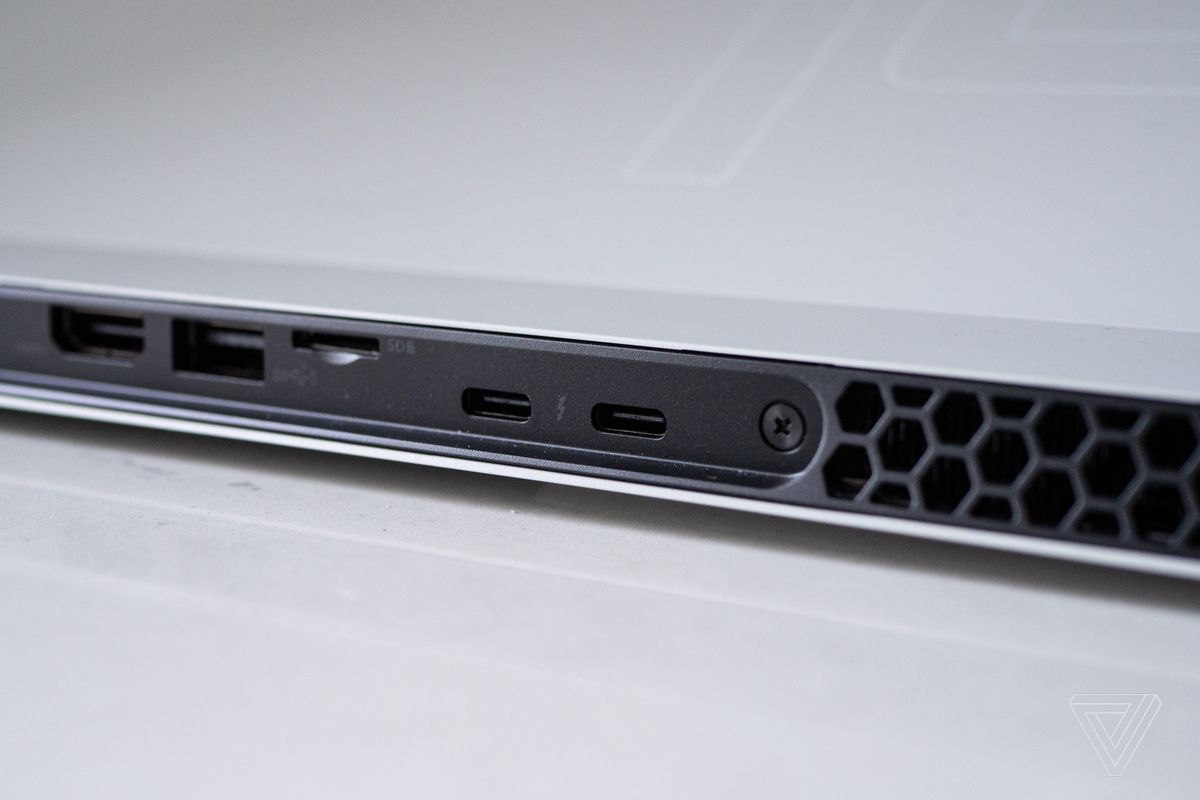
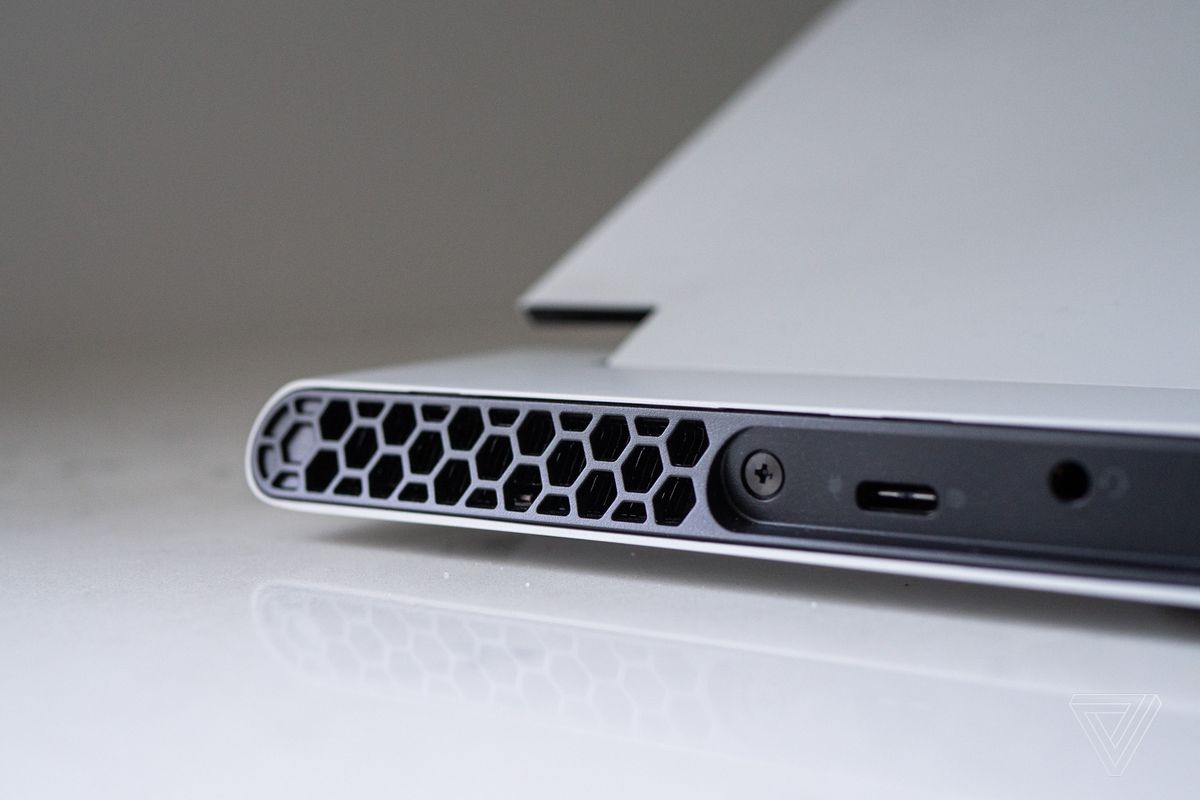
All of the X14’s ports are located around its back instead of being split between the rear and sides on the larger X-series laptops. Here, you’ll find three USB-C ports (two of which are Thunderbolt 4 / USB4 ports, though all support charging and DisplayPort 1.4 video out), a 3.5mm headphones jack, an HDMI 2.1 port, a UHS-II microSD card slot, and a USB-A port. The X14 has fewer ports than the X15 or X17, but the casualties might be minor, depending on your needs. In the size reduction, one USB-A port, mini DisplayPort, and the Ethernet port were lopped off. However, it’s a consolation to have so many USB-C ports here.
Parts of the X14’s keyboard got a little lost in translation, though. While it’s mechanically fine and quiet to type on, the layout feels cramped — especially along the right side. The key placement is actually no different from Alienware’s larger X-series machines, but some of the X14’s most crucial keys (for my line of work, at least) are too small on the X14. The one that tripped me up the most is the X14’s right Shift key. I sometimes confuse it for a forward slash while quickly typing due to its size or hit it when I want to arrow up in a document.
It’s also tough not to get frustrated at how close the Delete key is to the power button, too. Though Alienware — seemingly aware this could be an issue for some people — cleverly made the power button tougher to click than the other keys.

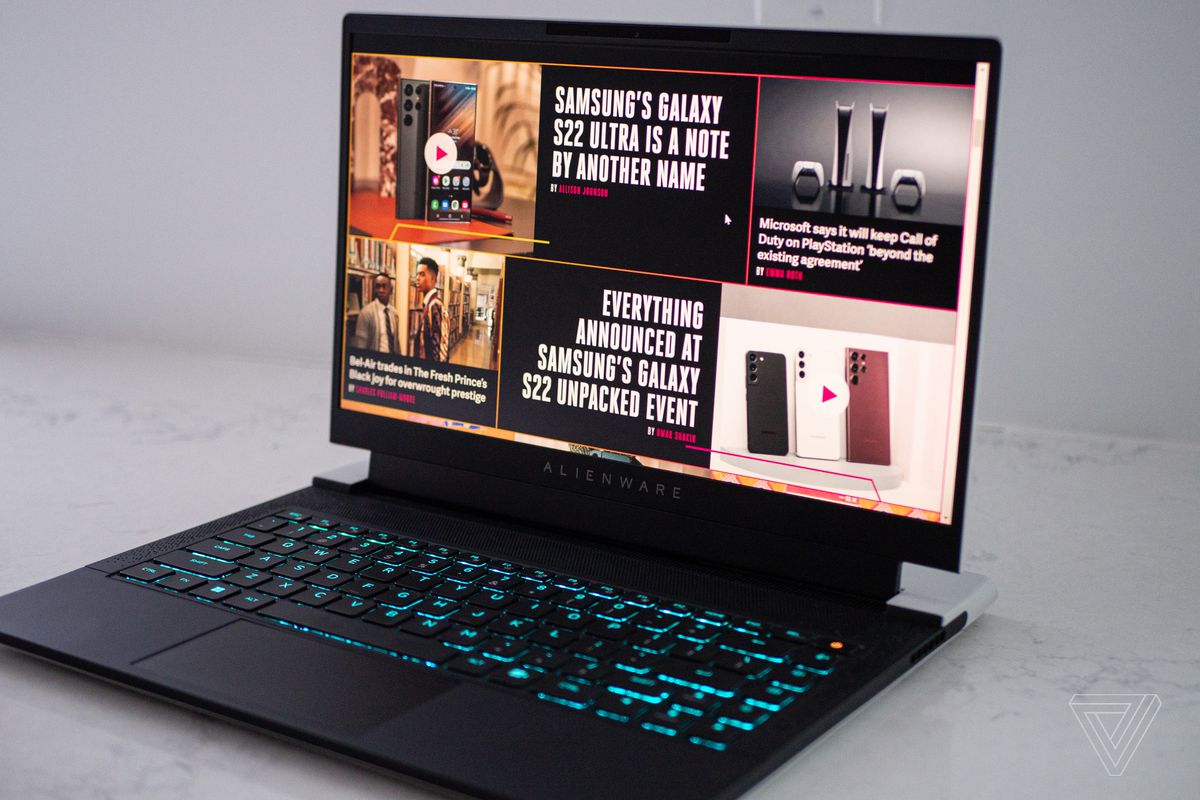
The X14 has a 14-inch 1080p display that offers Nvidia G-Sync adaptive sync to make games look smoother and more responsive. It has a 144Hz refresh rate and a 7ms response time. For creators, it supports 100 percent of the DCI-P3 color space. Alienware claims that this display can reach 400 nits of brightness, and at peak brightness, it crossed my threshold of “wow, that’s too bright for me to look at for very long.”
What’s new in Alienware’s 2022 X-series models is the introduction of Dolby Vision HDR, which will give compatible content a more realistic, contrast-rich look, as if you’re viewing it on a TV that supports the HDR standard. The tricky thing is, however, that unlike using a TV, the X14 doesn’t make it explicitly clear when or if you’re watching something in HDR. Games that I tested on this laptop seemed to look better, with more contrast, as well as deeper blacks instead of washed-out grays, but I sometimes questioned whether this feature was on or not.
I also didn’t know whether to blame Dolby Vision on a display quirk that I noticed. When I’d switch between dark web pages and light ones, the screen would auto-adjust the brightness after a few seconds. Automatically adjusting the brightness is typical HDR behavior, but we couldn’t confirm what caused this to happen. Alienware didn’t rule out that this display’s pre-installed ComfortView Plus blue light filter software could be causing this.
To see how the X14’s gaming chops stacked up, I loaded up Halo Infinite’s multiplayer experience. The settings defaulted to low across the board, but it consistently ran at around 90 frames per second when I bumped the graphics slider up to high. Indoor maps like Aquarius ran smoother than larger, outdoor maps, but performance was always stable and usually above 60 frames per second.
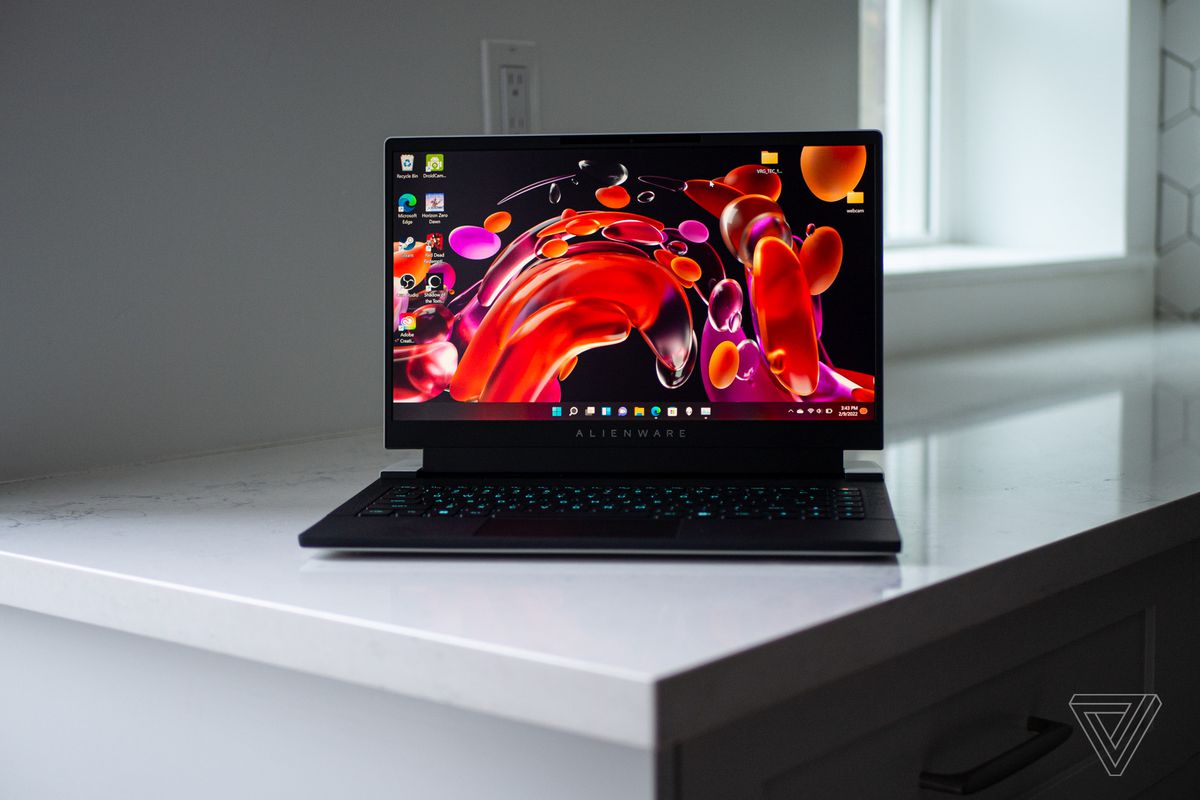
I was initially concerned about how fast-paced games might look given the display’s 7ms response time. I usually play on a desktop at home, connected to a 1ms-response-time monitor. But playing a few matches in Halo Infinite allayed my concerns that this particular spec would hinder the experience. I’m sure it would look different when compared head-to-head, but I simply couldn’t tell the difference mid-match, and so long as I’m getting no-scope shots with the Skewer weapon, I’m happy. And I appreciated how smooth everything looked — in-game and outside of gaming — on the 144Hz refresh rate screen. It’s hard to go back to 60Hz screens after you get a taste of silky-smooth scrolling.
Red Dead Redemption 2 put up an average of 50 frames per second in its built-in benchmark with all graphical settings set to ultra, which isn’t bad for a thin gaming laptop. With Nvidia’s DLSS (AI-based graphics upscaling) switched to auto mode, ultra settings provided a boost to an average of 57 frames per second in the benchmark. Given these results, when I knocked some settings down to high (and more memory-intensive settings down to medium), clearing the 60 frames per second threshold wasn’t too difficult for the X14. I’ve said it before, and I’ll say it again: DLSS is a blessing to have for machines like this one that otherwise would struggle to run games at their highest settings.
I also tried a game called Exo One on the X14 to test out the system’s Dolby Vision-ready display (offered in every configuration). Running this game at its highest settings wasn’t a challenge for the X14, and the display’s contrast was more impressive than I expected. Exo One starts out with dark scenes, and though there was no indicator, it seemed as though an HDR effect was switched on. The black nothingness of outer space looked like a much deeper black than what I’ve seen on other gaming laptop displays. It made me excited at the prospect of playing games like Deathloop, No Man’s Sky, and others that are rich in lush colors and contrast.
Alienware had to shrink its cooling system for the X14, but regardless of the task, the X14 does a commendable job running relatively cool and quiet. It pushes warm air out of its rear and from the vents located along the sides close to the display hinge. The X14 didn’t get uncomfortably hot, nor were its fans unreasonably loud.
By default, the X14 automatically switches between using the integrated and dedicated graphics depending on the app that you’re using. So when I launch a game, a toast notification tells me that Nvidia Optimus has switched to the GPU. And when I quit, there’s a second-long hitch as the system switches back to the Intel Iris Xe graphics. This sort of graphics-switching tech isn’t necessarily new in models that have multiple graphics options, but companies like Alienware, Razer, Asus, and others are making a bigger deal out of the feature with this year’s models.
Not to be hyperbolic, but I was blown away by the X14’s chops in exporting 4K video in Adobe Premiere Pro. During our test, which runs a 5-minute-33-second 4K video through the export process, the X14 completed the task in three minutes flat. Puzzled by how good this result was, I did it again, and it provided similar results. Last year, it was challenging to find any gaming laptop that could accomplish such a speedy feat, but to my surprise, this downsized model sure can sprint through exports.
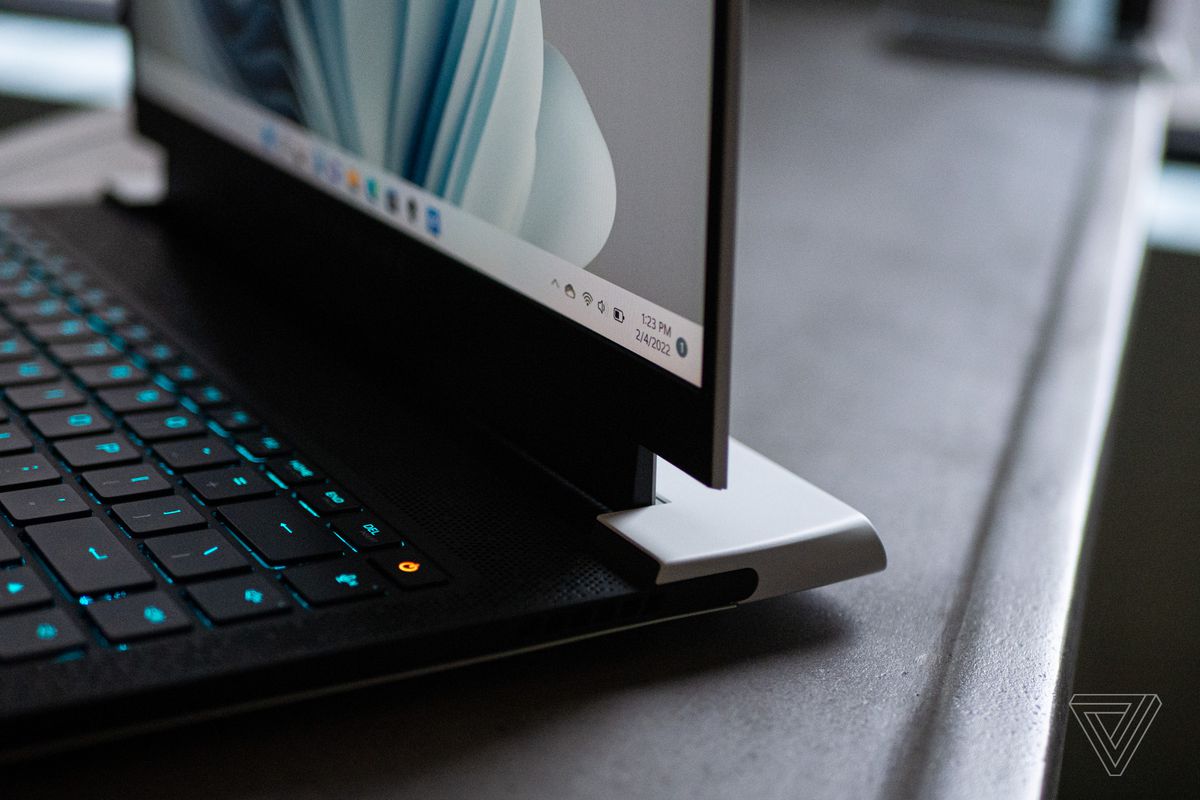
This swift performance seems to be a feature of Intel’s 12th Gen Alder Lake mobile processors. In Monica Chin’s review of the far-more-expensive MSI GE76 Raider, which has Intel’s Core i9-12900HK processor, it tore through the same export in just under two minutes. So, it’s encouraging that spending far less on the X14 (that MSI model runs for $3,999.99) can still get you very promising results in this particular use case.
For ultra-portable gaming rigs like the X14, battery life is almost as important as raw power. And that’s where Intel-based laptops have seemingly plateaued, as opposed to AMD’s past couple of CPU generations, which have shown vast improvements in efficiency. With Microsoft Edge running over a dozen tabs that I need for work, the X14 lasted just over four and a half hours. That’s a couple of hours less than what I was expecting, especially since Alienware brags that its 80Wh battery is the largest capacity ever put into a 14-inch gaming laptop.
This merely acceptable battery life is not far from my experience with Alienware’s bigger 15-inch and 17-inch gaming laptops. I’m confident that the incoming wave of AMD-equipped models will improve on the results that we’ve seen so far with Alder Lake.
Fortunately, the X14 conveniently charges via USB-C, and it comes with a compact 130W USB-C charger. What’s more, Alienware says that you can use any USB-C PD charger to charge the X14. But unless you’re using a relatively speedy one, the X14 may actively drain instead of charging. With an 18W USB-C charger that I had lying around, the X14 slowly drained (even in power efficiency mode) instead of charging. So, I’d only suggest parting with the included 130W USB-C charger if you plan to charge the X14 as it sleeps.
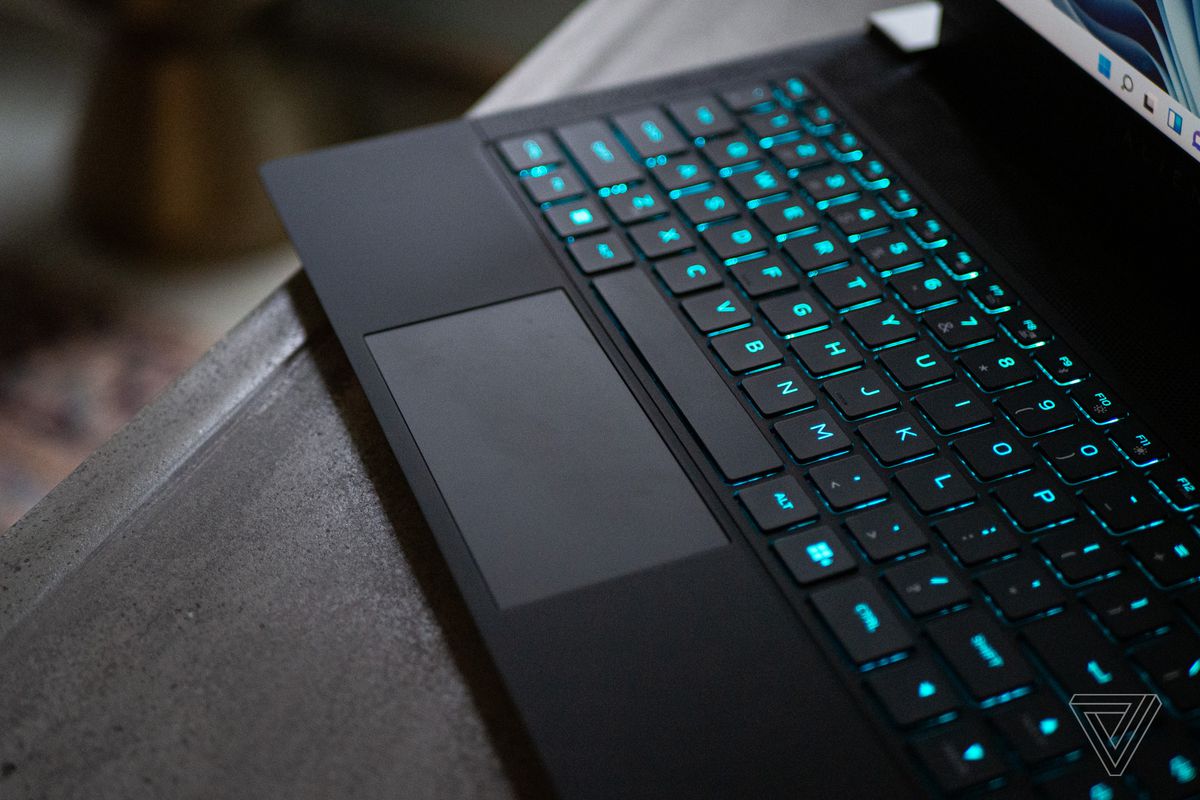
Whether you get the X14 primarily for gaming or for other tasks, I suggest investing in a headset or headphones as well as a mouse. Alienware touts Dolby Atmos support, but like most other gaming laptops, the X14’s speakers didn’t sound particularly great. It just sounds like most laptop speakers to me: abrasive at high volumes and lacking in warmth.
As for the trackpad, definitely get a mouse. I’m not the biggest fan of trackpads in general, but this one’s small and kludgy. It supports all of the usual gestures as a Windows Precision trackpad. But I wish it had better feedback or at least physical switches that offered more satisfying tactility.

Alienware isn’t breaking new ground with the X14. Other brands like Acer, Asus, Razer, and more are now years into incorporating 14-inch options into their respective lineups. And some of them aim higher, offering better performance in this small form factor. That doesn’t take away from the X14 being a big deal for Alienware. It’s also a big deal for casual gamers who’ve always wanted an Alienware that can fit more easily into their lives (and backpacks).
Though, considering that its price hovers around $2,000 for specs worthy of playing the latest games, it’s hard to recommend this over more powerful gaming laptops — even if they are bigger. And with many of 2022’s most exciting options coming on the horizon, like the 14-inch Asus ROG Zephyrus G14, you should at least wait and see how they stack up on release. For a few hundred bucks more than the X14’s high-end option that I tested, the $2,599.99 Razer Blade 14 comes with a higher-resolution QHD screen and a faster RTX 3070 Ti graphics chip.
But if you’ve always wanted a smaller Alienware laptop, it’s here, and it’s not bad. And hopefully, the next iteration will be even better.
Images and Article from The Verge – Entertainments

